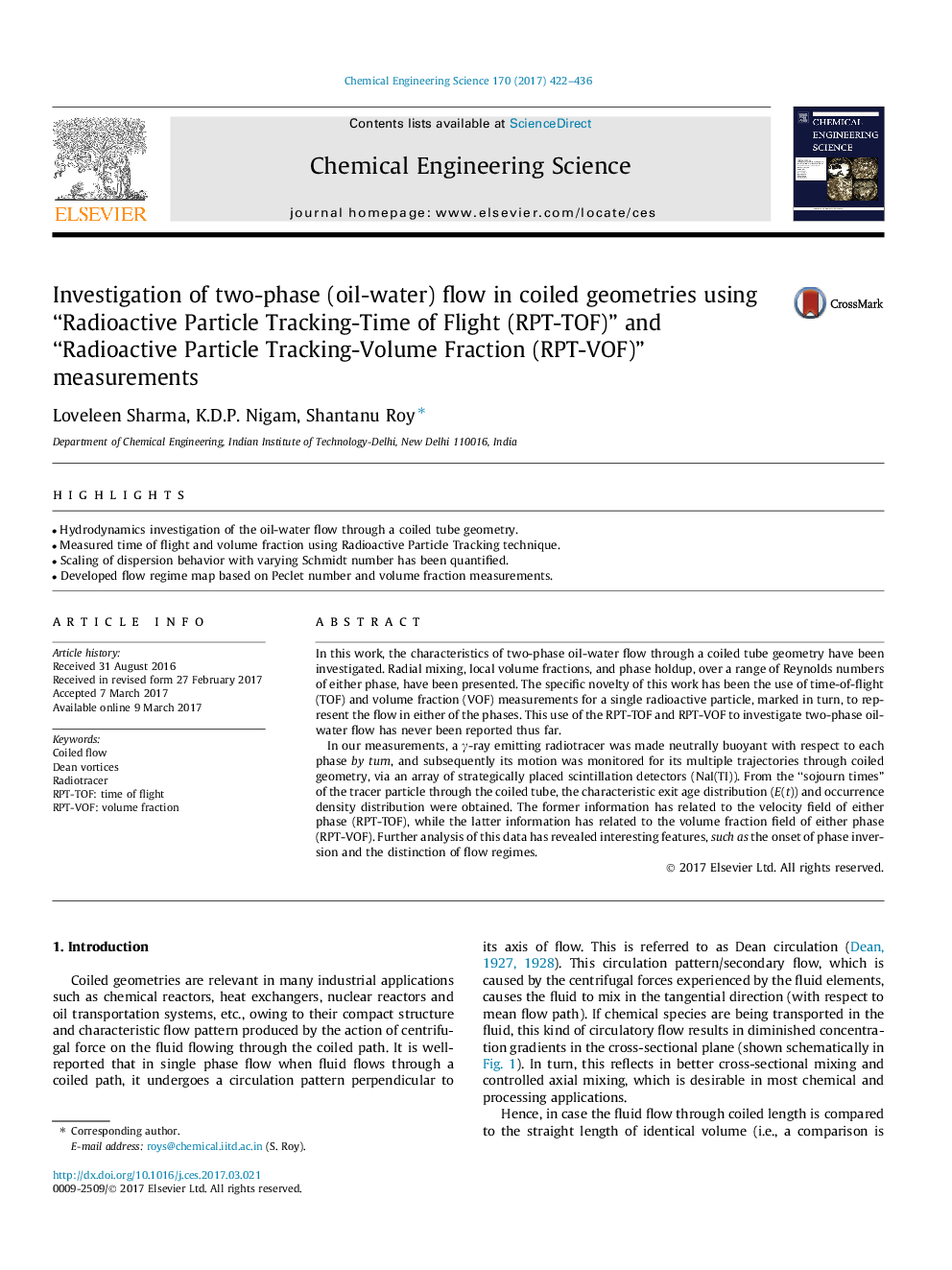| Article ID | Journal | Published Year | Pages | File Type |
|---|---|---|---|---|
| 6467267 | Chemical Engineering Science | 2017 | 15 Pages |
â¢Hydrodynamics investigation of the oil-water flow through a coiled tube geometry.â¢Measured time of flight and volume fraction using Radioactive Particle Tracking technique.â¢Scaling of dispersion behavior with varying Schmidt number has been quantified.â¢Developed flow regime map based on Peclet number and volume fraction measurements.
In this work, the characteristics of two-phase oil-water flow through a coiled tube geometry have been investigated. Radial mixing, local volume fractions, and phase holdup, over a range of Reynolds numbers of either phase, have been presented. The specific novelty of this work has been the use of time-of-flight (TOF) and volume fraction (VOF) measurements for a single radioactive particle, marked in turn, to represent the flow in either of the phases. This use of the RPT-TOF and RPT-VOF to investigate two-phase oil-water flow has never been reported thus far.In our measurements, a γ-ray emitting radiotracer was made neutrally buoyant with respect to each phase by turn, and subsequently its motion was monitored for its multiple trajectories through coiled geometry, via an array of strategically placed scintillation detectors (NaI(TI)). From the “sojourn times” of the tracer particle through the coiled tube, the characteristic exit age distribution (E(t)) and occurrence density distribution were obtained. The former information has related to the velocity field of either phase (RPT-TOF), while the latter information has related to the volume fraction field of either phase (RPT-VOF). Further analysis of this data has revealed interesting features, such as the onset of phase inversion and the distinction of flow regimes.
